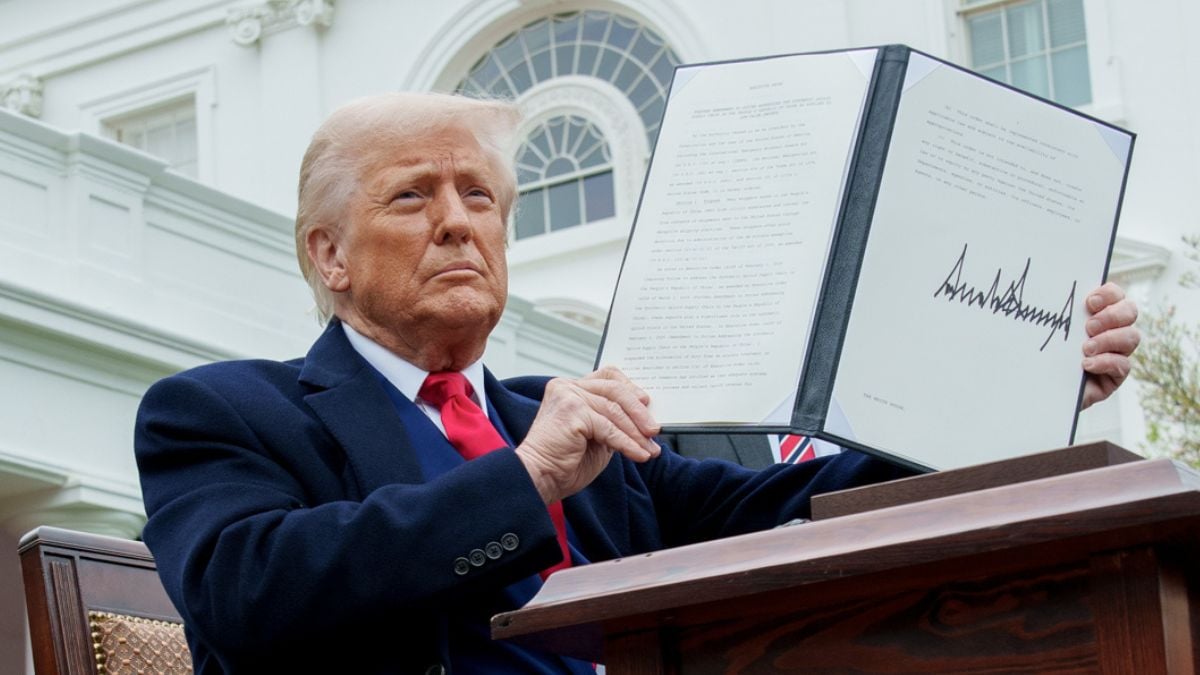
The trade war launched by President Donald Trump is once again at the center of global debate, and with it, tariffs have become a trending search on Google. In an unexpected political and economic move, Trump announced a 90-day pause on reciprocal tariffs, while raising duties on Chinese imports to a historic 125%. The decision stunned markets, investors, and governments alike, triggering a wave of reactions across Asia and Europe.
In a message posted on Truth Social, Trump justified his decision:
“Based on the lack of respect that China has shown to the World’s Markets, I am hereby raising the Tariff charged to China by the United States of America to 125%, effective immediately…”
At the same time, he declared a partial truce:
“…I have authorized a 90 day PAUSE, and a substantially lowered Reciprocal Tariff during this period, of 10%, also effective immediately.”
ALSO READ: Frito-Lay Tostitos Corn Chip Recall April 2025: What You Need to Know
What impact has Trump’s new tariff policy had?
Trump’s announcement comes amid growing tensions with China and the European Union, which had already unveiled retaliatory measures. China’s Ministry of Finance raised its tariffs on U.S. goods to 84%, up from a previously announced 34%, while issuing a stern warning:
“If the U.S. insists on further escalating its economic and trade restrictions, China has the firm will and abundant means to take necessary countermeasures and fight to the end.”
“The U.S. escalation of tariffs against China is a mistake upon mistake, which seriously infringes on China’s legitimate rights and interests and severely undermines the rules-based multilateral trading system,” reads the message published by the country’s Ministry of Economy.
The European Union, meanwhile, confirmed a first wave of 25% tariffs on U.S. products, in response to the 20% tariffs imposed by Washington on European goods.
Why did Trump raise China’s tariffs to 125%?
The former president claims the hike is aimed at punishing what he sees as abusive trade practices by China. As he wrote:
“China will realize that the days of ripping off the U.S.A., and other Countries, is no longer sustainable or acceptable.”
Trump’s strategy appears to be pushing China toward the negotiating table while encouraging more companies to establish operations within the U.S.
Treasury Secretary Scott Bessent defended the administration’s stance, stating that China stands to lose the most:
“They are the surplus country. Their exports to the U.S. are five times our exports to China… this escalation is a loser for them.”
How did global markets react?
The market volatility was immediate. Global stocks tumbled, while U.S. markets recovered strongly after the announcement of the tariff pause. The Dow Jones rose 2,305 points (6.13%), the S&P 500 gained 6.72%, and the Nasdaq soared 8.22%.
The CBOE Volatility Index (.VIX), known as Wall Street’s “fear gauge,” hit 36.78 points, reflecting the prevailing uncertainty.
The temporary relief also impacted the bond market. The 10-year U.S. Treasury yield dropped to 4.370%, signaling solid investor demand despite global turmoil.
What does this mean for companies and industries?
Delta Air Lines CEO Ed Bastian acknowledged that trade uncertainty has impacted their growth plans:
“With broad economic uncertainty around global trade, growth has largely stalled.”
The airline scaled back its 2025 forecast and reported weakening bookings from both corporate and leisure travelers.
Meanwhile, tech giants like Apple and Nvidia led the market rally, while interest rate-sensitive sectors like real estate and utilities rebounded after recent losses.
Is this the beginning of a new phase in the trade war?
The outlook remains uncertain. China has begun censoring information about tariffs on social media platforms like Weibo, and according to Trump’s advisers, over 70 countries have reached out to negotiate.
Although the tariff standoff is in a kind of “technical pause,” the increase to 125% on Chinese goods suggests the confrontation is far from over. The upcoming earnings season, with major banks like JPMorgan set to report results, will provide more insight into the economic toll of Trump’s trade policies.
Still, Trump remains confident in the outcome:
“BE COOL! Everything is going to work out well. The USA will be bigger and better than ever before!”










